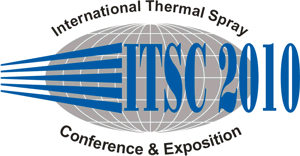
|
2153 |
|
Monday, May 03, 2010, Moor Room 4:00 PM Biomedical Coatings |
|
High velocity suspension flame spraying (HVSFS) deposition of bioactive glass coatings on Ti substrates with and without TiO2 bond coating |
|
Valeria Cannillo / University of Modena and Reggio Emilia, Italy Giovanni Bolelli / University of Modena and Reggio Emilia, Italy Rainer Gadow*/ Universität Stuttgart, Germany Andreas Killinger/ Universität Stuttgart, Germany Luca Lusvarghi/ University of Modena and Reggio Emilia, Italy Antonella Sola/ University of Modena and Reggio Emilia, Italy Nico Stiegler/ Universität Stuttgart, Germany |
|
High velocity suspension flame spraying (HVSFS) deposition of bioactive glass coatings on Ti substrates, with and without TiO2 bond coating G. Bolelli*, V. Cannillo*, R. Gadow, A. Killinger, L. Lusvarghi*, A. Sola*, N. Stiegler Universität Stuttgart, Institute for Manufacturing Technologies of Ceramic Components and Composites, IMTCCC, Allmandring 7b, D-70569 Stuttgart, Germany * Department of Materials and Environmental Engineering, University of Modena and Reggio Emilia, Via Vignolese 905, I-41100 Modena (MO), Italy Abstract The high velocity suspension flame spraying (HVSFS) process, which enables the direct use of a liquid feedstock, is a promising technique for the deposition of bioactive glass coatings on various substrates. Bioglass coatings on Ti substrates are used for prosthetic applications, in order to favour osseointegration. Excellent bioactivity was found for an innovative glass composition (46.0 mol% SiO2, 2.6 mol% P2O5, 27.0 mol% CaO, 24.4 mol% K2O), hereinafter referred to as ?Bio-K?. Preliminary HVSFS-deposited ?Bio-K? coatings highlighted a through-thickness microstructural gradient across the coatings. The first layer, directly sprayed onto the substrate, was thinner and more porous than the subsequent ones. The impinging glass droplets were indeed frozen by the heat transfer to the metal substrate, before they could flatten and consolidate completely. In order to solve this problem, the effectiveness of interposing a TiO2 bond coat between the Ti substrate and the glass coating was investigated in the present research. This bond coat increases the chemical affinity of the substrate surface towards the glass and reduces its thermal conductivity, so that the adhesion strength of the first bioglass layer should be improved and its defectiveness reduced. ?Bio-K? coatings were therefore HVSFS-deposited both onto uncoated Ti plates and onto plates with an atmospheric plasma sprayed (APS) TiO2 bond coat. Micron-size glass powders, produced by melting suitable raw materials in Pt crucibles, fritting, attrition-milling and sieving were dispersed in a water+isopropanol mixture in order to obtain a stable suspension feedstock. Both uncoated and bond-coated plates were pre-heated to ≥100 °C before the bioglass was sprayed. The microstructure of the glass coatings was characterised by SEM, XRD and Raman spectroscopy; their adhesion strength was measured by tensile adhesion testing; their bioactivity was evaluated by soaking in simulated body fluid (SBF) for different times. |